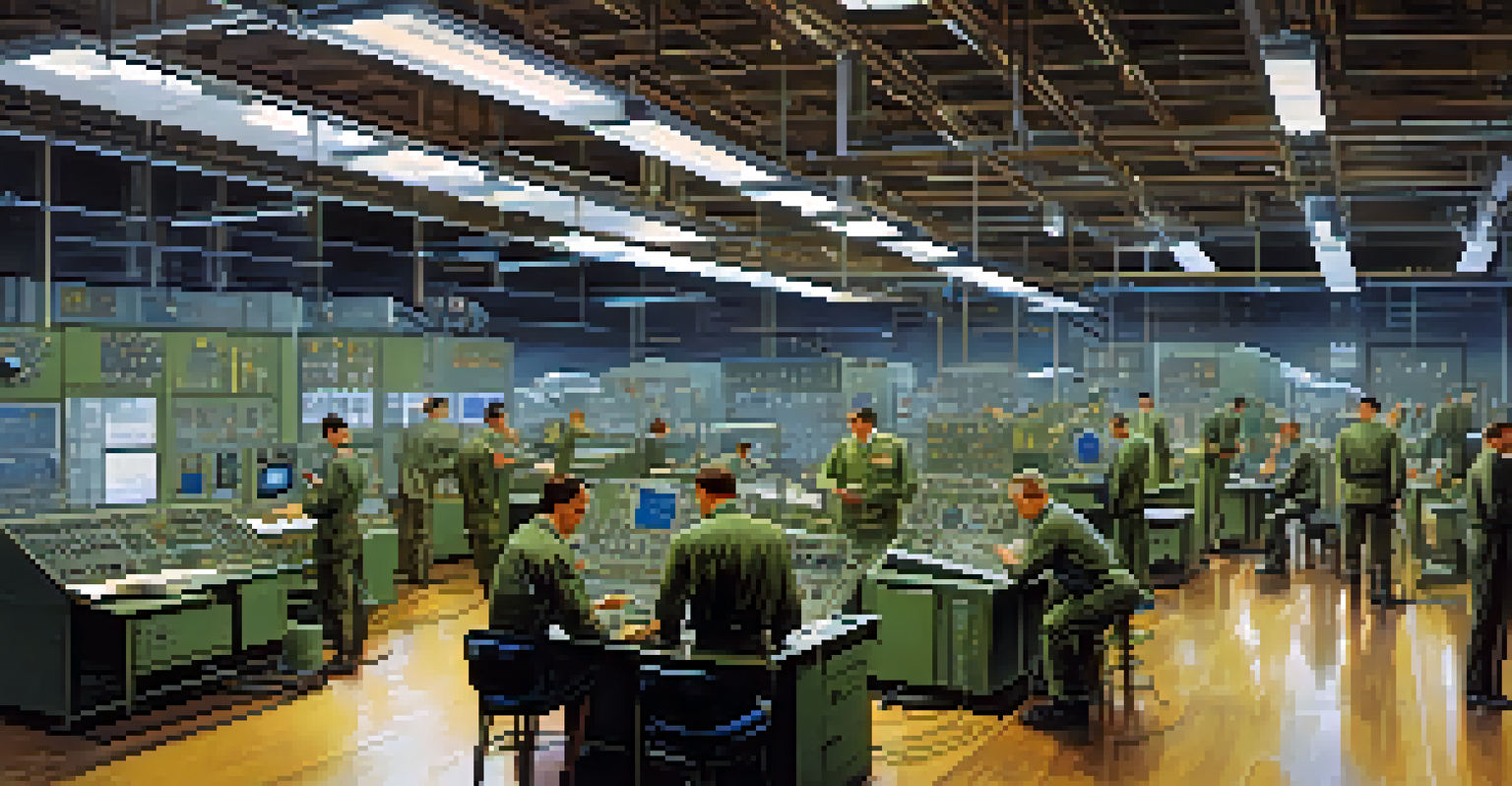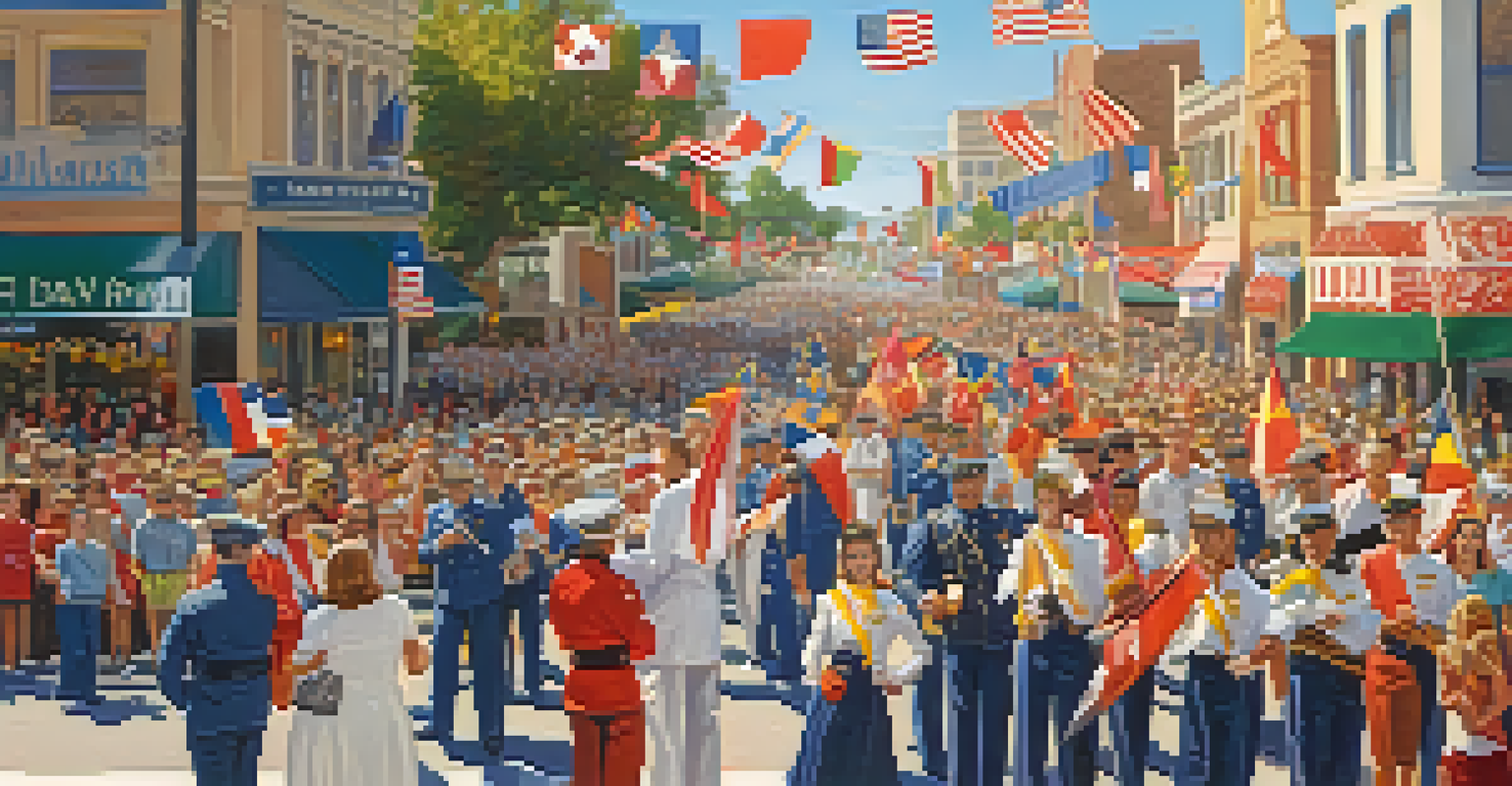San Diego's Role in the Cold War: A Historical Perspective

The Cold War: A Brief Overview of Tensions
The Cold War, lasting from the late 1940s to the early 1990s, was marked by political and military tension primarily between the United States and the Soviet Union. This period was characterized by nuclear arms races, espionage, and ideological battles. Understanding this backdrop is crucial for appreciating San Diego's unique position during these tumultuous years.
In the midst of chaos, there is opportunity.
As the world was divided into two camps, the West and the East, cities like San Diego played pivotal roles in military strategy and operations. The city’s geographical proximity to the Pacific made it an ideal location for naval power, which was essential in projecting strength during these uncertain times.
In this context, San Diego became not just a military hub, but also a center for innovation and defense technology. Its involvement in Cold War dynamics would shape not only its own development but also the broader narrative of American military history.
Naval Facilities: San Diego's Strategic Importance
San Diego is home to one of the largest naval fleets in the United States, making it a key player during the Cold War. The presence of Naval Base San Diego, which serves as a major homeport for the U.S. Navy, provided the military with critical operational readiness. This strategic location allowed the Navy to quickly deploy forces to various Pacific theaters.

Additionally, the city's facilities were vital for training and equipping personnel. The Navy's significant investment in San Diego not only bolstered national defense but also contributed to the local economy. This relationship transformed San Diego into a bustling military town, integrating military life with civilian community.
San Diego's Strategic Military Role
During the Cold War, San Diego's geographical location and naval facilities made it a crucial hub for U.S. military operations.
The continued expansion of naval operations during the Cold War era underscored San Diego's role as a frontline city in the fight against communism. This legacy continues to influence the city's identity today.
The Role of Technology and Innovation
San Diego’s contribution to aerospace and defense technology was crucial during the Cold War. Companies like General Dynamics and Northrop Grumman established a strong foothold in the area, developing advanced military aircraft and weaponry. This technological race was vital for maintaining an edge over the Soviet Union.
The best way to predict the future is to create it.
The collaboration between military and private sectors fostered a culture of innovation in San Diego. Research and development projects led to breakthroughs that not only enhanced national security but also contributed to civilian industries later on. This synergy between defense and technology helped shape the city into a tech hub.
Moreover, these advancements often had a ripple effect, influencing local education and workforce development. The demand for skilled workers in the defense sector led to the establishment of programs in engineering and technology at local universities, creating a legacy of expertise that persists today.
Espionage and Intelligence Operations
Espionage played a significant role during the Cold War, and San Diego was no exception. The city was strategically located near the U.S.-Mexico border, making it an ideal spot for intelligence operations. This positioning allowed for surveillance and monitoring of Soviet activities, as well as the movement of potential threats.
The presence of military installations also made San Diego a hub for covert operations. Intelligence agencies often relied on the city’s resources for gathering crucial information and conducting reconnaissance missions. This secretive aspect of the Cold War added an intriguing layer to San Diego’s historical narrative.
Technological Innovation in Defense
The collaboration between military and private sectors in San Diego led to significant advancements in aerospace and defense technology.
Although many of these operations remain classified, the impact of espionage in San Diego was profound. It contributed to the city’s reputation as a critical player in national security, further solidifying its importance during this period.
Cultural Reflections: War and Society
The Cold War era influenced not just military strategies, but also the cultural landscape of San Diego. With an influx of military personnel and their families, the city experienced significant demographic changes. This created a unique blend of cultures and lifestyles that shaped the community's identity.
Local art, music, and literature often reflected the tensions of the time, incorporating themes of patriotism and fear of communism. Community events and gatherings fostered a sense of unity and resilience, as residents navigated the uncertainties of the Cold War together.
In this way, San Diego's cultural scene became a mirror of the broader national sentiment, encapsulating the hope and anxiety that defined the era. This vibrant cultural backdrop remains a testament to the city's adaptability in challenging times.
Community and the Military: A Symbiotic Relationship
The relationship between San Diego’s civilian community and the military was a defining characteristic of the Cold War period. As military installations expanded, local businesses flourished, creating a symbiotic relationship that benefited both sectors. The influx of personnel stimulated job growth and economic development in the region.
Community events, such as parades and festivals, often celebrated military achievements and fostered pride among residents. This connection helped bridge the gap between military and civilian life, promoting mutual understanding and respect. Local organizations began to support military families, providing them with resources and a sense of belonging.
Cultural Impact of the Cold War
The Cold War era shaped San Diego's cultural landscape, fostering a unique community identity influenced by military presence and demographic changes.
Moreover, this partnership laid the groundwork for continued collaboration post-Cold War. Today, San Diego remains a military-friendly city, reflecting a shared history that continues to shape its identity.
Legacy of the Cold War in Modern San Diego
The Cold War’s influence is still palpable in modern San Diego, evident in its military presence and technological advancements. The city’s naval base remains a cornerstone of national defense, while defense contractors continue to thrive in the region. This enduring legacy underscores the importance of San Diego in shaping military policy and strategy.
In addition to military significance, the Cold War spurred considerable growth in education and research sectors. Institutions like UC San Diego emerged as centers of innovation, contributing to advancements in technology and science that benefit society as a whole.

As San Diego looks toward the future, it carries with it the lessons learned during the Cold War. The city’s resilience, adaptability, and commitment to innovation continue to define its evolution as a leading urban center.